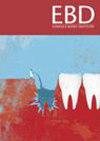在局部磨损病例中使用前牙修复的成功率是多少?
IF 2.3
Q3 Dentistry
引用次数: 0
摘要
目的:对文献进行系统回顾和荟萃分析,评估前牙修复在局部磨损病例中的成功率和存活率。这也包括评估后牙重建咬合接触使用达尔入路后。数据来源:两个大型数据库;使用Medline via OVID和Scopus来识别现有文献。该评价遵循系统评价和荟萃分析的首选报告项目(PRISMA)和荟萃分析指南,并使用PIO框架bbb。灰色文献也被检索。研究选择:纳入1970年1月至2020年11月期间用英文撰写的出版物。人群:有局部前牙缺失的受试者。干预:前路复合修复。结果:复合修复体的成功率和存活率。最终分析纳入了6项队列研究,其中3项为前瞻性研究,3项为回顾性研究。这些研究评估了直接和间接复合修复的成功率和存活率,随访时间为2000年至2016年,随访时间为5个月至10年。数据提取和综合:提取的数据包括:作者和年份、研究类型、参与者人数和年龄、修复体数量、干预地点、干预类型(直接与间接)、复合类型、OVD增加(增加量和重建后牙合的时间)、随访时间、失败的定义、失败的修复体数量、干预评估和寿命/存活率。个体研究的偏倚风险采用队列研究的纽卡斯尔渥太华质量评估量表(NOS)进行评估。结果测量标准为成功或生存:根据修改后的美国公共卫生服务(USPHS)标准,成功-恢复归为A类。根据修改后的USPHS标准,生存恢复被划分为A类或B类。如果在修改后的USPHS标准上分配任何其他等级,则认为修复失败。结果用森林样地可视化。研究间异质性采用i平方统计量测量。对每个结果进行敏感性分析。结果:复合修复体(直接和间接)在2-10年随访期间的存活率为88% (95% CI, 70-90%;i2 = 97%)。当从一项研究中剔除显著异常值并重新分析时,2-7年随访时生存率增加到93% (95% CI, 85-98%;i2 = 83%)。在相同的2-10年期间,复合修复的成功率为68% (95% CI, 44-87%;i2 = 98%)。由于研究设计、样本量、干预类型和随访时间的差异很大,异质性通常被认为很高。前路复合Dahl入路重建后牙合的成功率为85% (95% CI, 73%-94%),耗时1.5至25.4个月。结论:对于局部牙磨损患者,前牙复合修复在2-10年内成功率较高,在2-7年内成功率更高。虽然,当考虑到轻微和主要类型的恢复失败时,总体存活率相当低。本综述支持继续使用前牙复合材料修复磨损牙齿,具有良好的中短期寿命。然而,考虑到证据的质量、研究的异质性和纳入的研究数量有限,这些结论应谨慎解释。本文章由计算机程序翻译,如有差异,请以英文原文为准。
What are the success rates of anterior restorations used in localised wear cases?
A systematic review and meta-analysis of the literature was carried out assessing the success and survival rate of anterior restorations used in localised wear cases. This also included assessment of posterior teeth re-establishing occlusal contact following use of the Dahl approach. Two large databases; Medline via OVID, and Scopus were used to identify existing literature. The review followed Preferred Reporting Items for Systematic Reviews and Meta-Analysis (PRISMA) and Meta-analyses guidelines and used the PIO framework [1]. Grey literature was also searched. Publications written in English were included between Jan 1970 and Nov 2020. Population: participants with localised anterior tooth loss. Intervention: anterior composite restorations. Outcome: success and survival rates of the composite restorations. Six cohort studies were included in the final analysis, with three prospective and three retrospective. These studies evaluated the success and survival rates of direct and indirect composite restorations, with a follow-up period ranging from 5 months to 10 years, which took place between 2000 to 2016. Extracted data included: author(s) and year, study type, number and age of participants, number of restorations, location for intervention, type of intervention (direct vs indirect), type of composite, increase in OVD (amount of increase and period to re-establish posterior occlusion), follow up period, definition of failure, number of failed restorations, assessment of intervention and longevity/survival rate. Risk of bias in individual studies was assessed using The Newcastle Ottawa quality assessment scale (NOS) for cohort studies. Outcome measures were standardised as success or survival: The restoration was considered a failure if any other grades were allocated on the modified USPHS criteria. Results were visualised using forest plots. Heterogeneity between studies was measured by I-squared statistic. Sensitivity analysis was performed for each outcome. The survival rates for composite restorations (direct and indirect) at 2–10 years follow-up was 88% (95% CI, 70–90%; I2 = 97%). When significant outliers from one study were removed, and re-analysed, the survival rates increased to 93% at 2–7 years follow-up (95% CI, 85–98%; I2 = 83%). Success rates for composite restorations over the same 2–10 year period was 68% (95% CI, 44–87%; I2 = 98%). Heterogeneity was generally considered high due to large variations in study design, sample size, type of intervention, and follow-up period. The success of the anterior composite Dahl approach in re-establishing posterior occlusion was reported at 85% (95% CI, 73%–94%), which took between 1.5 and 25.4 months. Anterior composite restorations had a high success rate over a period of 2–10 years in patients affected by localised tooth wear, which was higher over a 2–7 year interval. Although, the overall survival rates were considerably lower when accounting for minor and major types of restoration failure. This review supported continued use of anterior composites for restoring worn teeth, which had good short-medium term longevity. However, these conclusions should be interpreted with caution considering the quality of evidence, the heterogeneity of the studies and the limited number of studies included.
求助全文
通过发布文献求助,成功后即可免费获取论文全文。
去求助
来源期刊

Evidence-based dentistry
Dentistry-Dentistry (all)
CiteScore
2.50
自引率
0.00%
发文量
77
期刊介绍:
Evidence-Based Dentistry delivers the best available evidence on the latest developments in oral health. We evaluate the evidence and provide guidance concerning the value of the author''s conclusions. We keep dentistry up to date with new approaches, exploring a wide range of the latest developments through an accessible expert commentary. Original papers and relevant publications are condensed into digestible summaries, drawing attention to the current methods and findings. We are a central resource for the most cutting edge and relevant issues concerning the evidence-based approach in dentistry today. Evidence-Based Dentistry is published by Springer Nature on behalf of the British Dental Association.
 求助内容:
求助内容: 应助结果提醒方式:
应助结果提醒方式:


